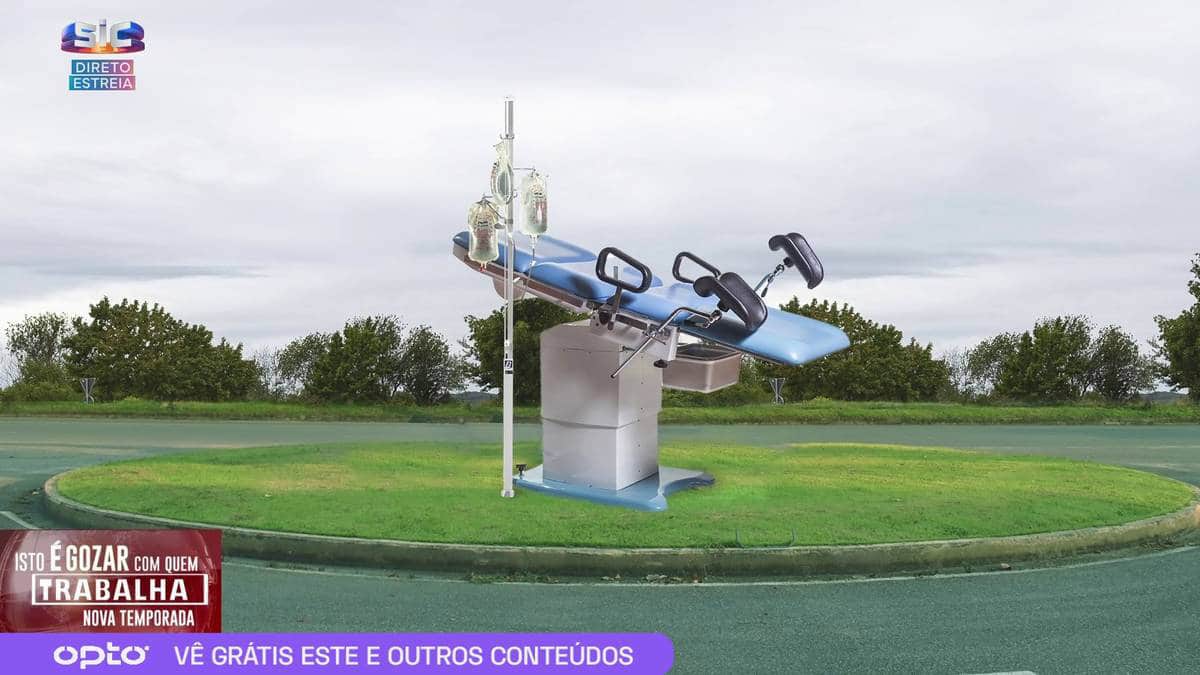National paramedics association comes up with brightest solution yet to ‘new normal’ of births in ambulances
Following a summer in which it has become almost normal for babies to be born in ambulances – as women in childbirth are transported miles out of their home areas, due to the ongoing crisis in obstetrics – the national association of paramedics has come up with a ‘no brainer’.
Why send women miles out of their districts when perfectly acceptable A&E departments have all the medical capacities required to receive them?
As the president of ANTEPH (initials for the national association of pre-hospital emergency technicians) points out: “It is better for a baby to be born in a general emergency facility than in an ambulance in the middle of the road…”
Of course it is! Why has it taken so long for someone to reach this completely logical conclusion?
Showing capacities that may well propel him beyond his current position, Luís Canária has stressed that the current ‘procedure’ of taking women to the nearest obstetric emergency room that is open essentially means they are forced to run the risk of having their babies born in ambulances “without medical support”.
As media reports have delighted in pointing out throughout the summer, dozens of babies have been born in ambulances, on motorway access roads, in laybys, even on roundabouts.
The situation was parodied last week in popular satirical show ‘Isto é Gozar com Quem Trabalha’ which suggested all roundabouts should be equipped with birthing chairs… (as per image above).
For Luís Canária the question authorities should be asking themselves is glaringly simple: “Is it better for births to have an emergency doctor or no doctor at all?”
And, as he also pointed out, sometimes mothers in labour are sent up to a 100 kms to an open maternity unit, when the local A&E department could be “five or 10 minutes away”.
Being first taken to a local A&E unit would, at very least, allow a woman’s condition to be medically assessed, “in order to decide whether (she) is in a position to be transported” to an obstetrics facility further afield, he said.
The current system is failing dismally, Canária explained, because decisions are being made ‘remotely’ by an operative on a telephone consulting a list of emergency obstetric departments that are either open, or closed.
That operative has no idea of the urgency of the woman’s condition, or otherwise, and is therefore making a ‘standardised’ decision that has ultimately led to so many babies arriving before their mothers are safely delivered to departments equipped to receive them.
It is, in fact, nothing short of miraculous that all the ambulance births have gone so smoothly.
But Luís Canária did not labour this point – more the point that all this frantic to-ing and fro-ing across country of women in labour, or with emergency situations in their pregnancies, has eaten into resources, tying up ambulances which find themselves haring far further than they usually need to, and therefore not being available for other local work when it comes up.
“In a normal emergency, things would happen under different conditions,” he stressed. “We need to make sure that we don’t undermine rescue services”.
In one simple interview, Luís Canária appears to have ‘cracked the problem’ entirely.
Health minister Ana Paula Martins has not referred to Mr Canária’s logic, but she has “expressed concern about the number of babies born in ambulances”, concedes Lusa, saying this is “a situation (that) should not happen next summer”.
Ms Martins then gave her service a bit of wriggle room by admitting that “babies are occasionally born in ambulances”, but “only in exceptional circumstances”.
natasha.donn@portugalresident.com

























